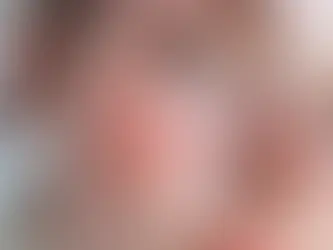What is KINS Clinic?
In Singapore, many individuals experience keloid scars. At KINS Clinic, we apply over 30 years of clinical experience and research from Japan to offer care designed for Asian skin. Our protocol supports both the management of existing keloids and the maintenance of skin health to help reduce the risk of recurrence.
Early medical attention may help prevent keloids from worsening. Our doctors offer individualised care aimed at minimising the visible impact of keloid scars.
If you are concerned, consider a timely consultation to explore suitable treatment options.

Expert Diagnosis and Treatment
At KINS Clinic, our doctors personally examine each patient and provide customized treatment plans based on individual skin types and conditions.

Science-Based Treatments
We utilize scientifically proven methods, including laser treatments, injections, prescription medications, and microbiome therapies.

Safety and Effectiveness
Our treatments adhere to strict safety standards, minimizing side effects while ensuring high efficacy.

Comprehensive Care
We provide holistic care that addresses not just keloid scars but also acne scars and other skin concerns.

Extensive Experience
With over 30 years of clinical experience and research on Asian skin, we offer treatment approaches developed to support diverse skin needs with personalised care.
What are Keloid Scars?
Keloids are raised, thickened areas of scar tissue that develop at the site of an injury. Unlike normal scars, keloids can continue to grow even after the wound has healed, often becoming larger than the original injury.
They are typically firm, smooth, and can vary in color from pink to dark brown. Common areas where keloids occur include the chest, shoulders, earlobes, and cheeks.

What Causes Keloid Scars?

Keloid scars are caused by an overproduction of collagen during the wound healing process. While the exact cause of keloid formation is still unclear, certain factors can increase the likelihood of developing them. These include genetics, skin type (darker skin tones are more prone), the location of the injury, and the extent of the trauma.
In some cases, minor injuries, such as acne scars or piercings, can also trigger keloid growth.
Keloid Scar Treatment Options
at KINS Clinic
At KINS Clinic, we provide a variety of medically guided treatment approaches to manage keloid scars. Based on your individual skin condition and scar characteristics, our doctors will recommend the most suitable options during your consultation.

1.
Steroid Injections
Steroid injections are commonly used to manage the appearance of keloid scars. By delivering corticosteroids directly into the scar tissue, this approach may help reduce inflammation and support flattening of the scar over time. Multiple sessions are typically required, and this method is often combined with other therapies to support better treatment outcomes.

2.
CO2 Laser Therapy
CO2 laser therapy is a clinically applied method that may help refine the surface of keloid scars by targeting the outer layers of scar tissue. At KINS Clinic, CO2 laser technology is used under professional guidance to ensure targeted application while considering the surrounding skin. This method may support improvements in scar texture and thickness by gradually vaporizing surface scar tissue. The process may also help refine the skin’s surface and reduce the visibility of the scar. For more information, visit our CO2 Laser Treatment page.

3.
Pulsed Dye Laser Therapy (Vbeam)
At KINS Clinic, we utilize Vbeam Pulsed Dye Laser Therapy for managing keloid scars. This FDA-approved treatment targets the blood vessels within the scar and may help reduce redness while supporting the skin’s natural healing process. The laser emits controlled bursts of light that interact with hemoglobin in the vessels, potentially contributing to a gradual reduction in scar prominence. Some patients may notice visible improvement after multiple sessions, depending on individual response. Learn more about this treatment on our Vbeam Laser Treatment page.

4.
Silicone gel
At KINS Clinic, Silicone Gel is one of the non-invasive treatment options we offer for managing keloid scars. Silicone gel may help retain moisture in the epidermis and is often used to support the management of both existing and developing keloid scars. This treatment may support scar softening, help ease skin discomfort, and contribute to a more refined scar appearance. When used regularly, it may assist in maintaining scar stability and reducing the likelihood of further growth. It may also be used as a complementary option alongside treatments such as laser therapy or steroid injections to support overall treatment plans.

5.
Combination Approach
In some cases, combining treatments may provide more comprehensive support in managing keloid scars. At KINS Clinic, we may recommend combining steroid injections with laser therapy, such as Vbeam or CO2 laser, as part of a personalised treatment plan. Steroid injections may help reduce inflammation and support scar flattening, while laser therapies may contribute to improved scar appearance and reduce the likelihood of regrowth. This integrated approach is intended to provide a well-rounded care plan, addressing both short-term concerns and longer-term scar management goals.
KINS Clinic DOCTOR'S PROFILE

Dr.Henry Loh
Dermatologist and Chief Medical Advisor
Fellows of the Academy of Medicine, Singapore (FAMS) / Membership of the Royal Colleges of Physicians (MRCP) / Bachelor of Medicine and Bachelor of Surgery (BMBS)
Prior to joining KINS Clinic, Dr. Henry Loh was a co- founding partner of Dermatology Associates, one of the largest private dermatology clinic groups in Singapore. He has also been instrumental in promoting the use of the latest treatments.

Medical Director and Consultant
Post-graduate Diploma in Practical Dermatology (PgDip) / Doctor of Medicine (MD) / Bachelor of Medical Studies (BMed) / Bachelor of Science in Medicine (BSc (Med))
Dr Silver Chua specialises in the medical care of acne, rosacea, and other common skin concerns, complemented by a strong background in aesthetic treatments. She leads the fully integrated care pathway at KINS Clinic—ensuring patients receive cohesive, evidence-based care that bridges both medical and aesthetic needs. Her approach is grounded in safety, with a strong emphasis on achieving naturally balanced, lasting results.
Dr Silver is fluent in both English and Mandarin

When Is Surgical Removal Considered for Keloid Scars?
Surgical removal may be considered as one of the options in managing keloid scars, particularly in cases where other methods have been less effective. While surgery removes the keloid tissue, it may also carry a risk of recurrence, as the surgical site may develop new scarring.
At KINS Clinic, non-invasive options such as Vbeam laser therapy are typically considered before surgical removal is explored. If surgery is pursued, it may be complemented by post-surgical treatments such as laser therapy or corticosteroid injections to support scar management and reduce the likelihood of regrowth.

















